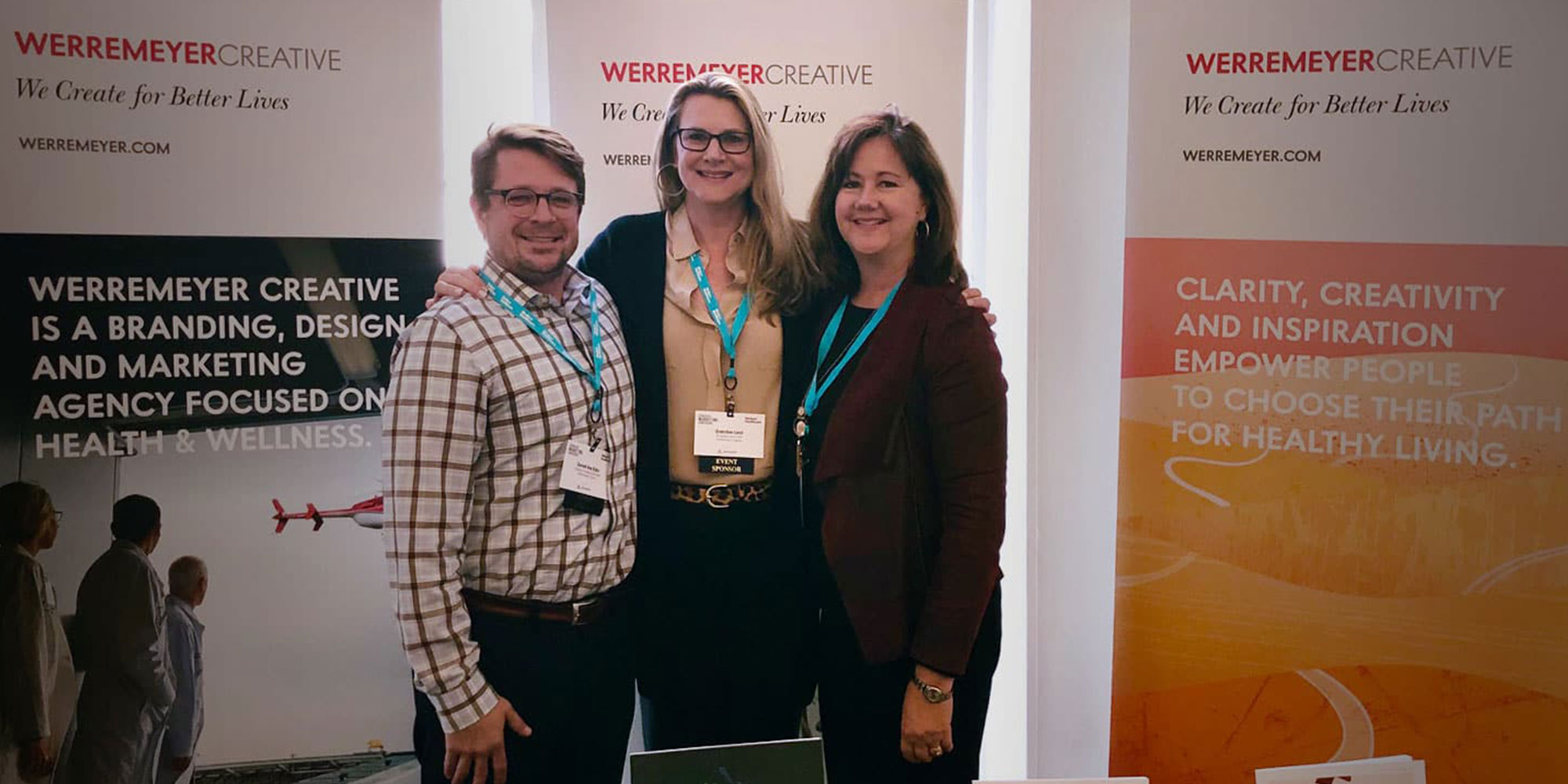Consumer-Centered Marketing
Healthcare marketing is an ever-evolving landscape.
Sometimes it seems impossible to keep up with all of the new strategies and tactics in marketing. By the time you’ve mastered the latest, a new “revelation” appears. But staying up to date with marketing trends is part of the job, and one of our specialties at Werremeyer.
This year, we were a sponsor at the Modern Healthcare’s Strategic Marketing Conference in St. Louis. At our booth, we had the opportunity meet a lot of talented people in the industry and learned some of the latest industry trends to help support our clients in healthcare.
We found 3 key healthcare marketing trends for 2020 that can be incorporated into your marketing plan: an increased focus on the patient experience, leveraging content to fuel marketing initiatives, and aligning your brand with your audience’s values. Overall we heard the need to bridge innovation and technology like AI and new digital tools with bringing more humanity and personalization to the methods by which we communicate to and with healthcare consumers.
1. Healthcare is transitioning from a medical to consumer mindset.
The last few years have witnessed exponential investment and growth at the intersection of marketing and technology, successfully changing consumer behavior and driving engagement. One of the biggest trends discussed, and noted by Harvard Business Review, is that healthcare organizations are focusing on making health services affordable and accessible as well as providing a greater focus on the patient experience. This includes better tools for patients such as scheduling, online bill pay, e-visits and renewing prescriptions. Then there are the infrastructural convenience upgrades like outlets to charge mobile devices from hospital beds.
2. Humanize your campaigns to reach your target audience.
Content marketing and storytelling is in a constant state of evolution as well: from multi-channel to channel agnostic thinking; from push and time-based campaigns to always-on push & pull engagement. The panelist discussed how the trend is moving away from generic pieces of content and mass communication to more personalized, relevant, and contextual experiences. One way hospitals and health organizations can get “the right content to the right person at the right time” is by increasing their sponsored content, making sure it is relevant to their target audience and placing it where that audience is searching.
3. Brands with purpose grow two times faster than brands without purpose.
Sixty-one percent of millennials expect companies to communicate and authentically act out their values. Millenials will decide the authenticity of your brand’s purpose within a few clicks.
Inc.com
The power of purpose is built on authenticity and trust. Taking your business from revenue-focused to being purpose-led takes time and commitment. Purposeful companies have a higher return than the companies focusing on just financial return. Without a meaningful purpose, healthcare brands will struggle to stay competitive in an ever disruptive landscape.
Consumer-centered healthcare marketing
The consumer is in the driver seat – asking questions and exercising choice.
- The healthcare consumer expects the same level of relevance, value, and storytelling they get from other services they use daily
- Waiting to adopt new industry trends could have you playing catchup with competitors in the long run
- Healthcare brands should focus on the overall user experience by becoming more consumer-driven
- Operate at the intersection of marketing, communication, technology, and healthcare
At the end of the day, you’re communicating with humans. Therefore, your messaging should focus on the consumer experience rather than the selling point. For a deeper look into our marketing strategy, view our process page.
